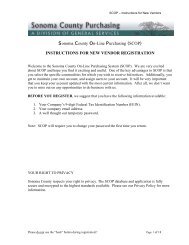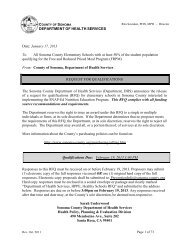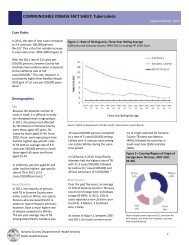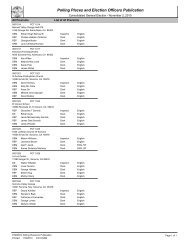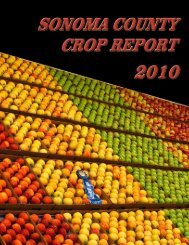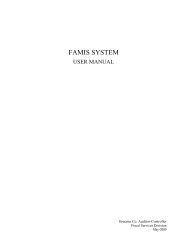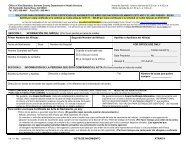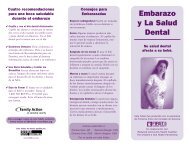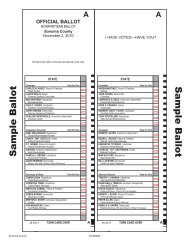Residential Building Permits - Sonoma County
Residential Building Permits - Sonoma County
Residential Building Permits - Sonoma County
Create successful ePaper yourself
Turn your PDF publications into a flip-book with our unique Google optimized e-Paper software.
appliances. The safeguards provide protection against fire hazard and air contamination.<br />
The CALIFORNIA PLUMBING CODE: Provides safety by means of safeguarding the potable water<br />
system within the building and insuring a safe means of collection and disposal of waste waters and<br />
sewage. This is accomplished by means of proper installation, adequate sizing, backflow prevention,<br />
air gaps, drain gaps, sanitary fixtures, and by traps, indirect wastes, and venting. This code also<br />
provides the regulations that govern the installation, sizing, and placement for gas piping serving<br />
residential appliances.<br />
The CALIFORNIA ELECTRICAL CODE. Deals with safe electrical installations encompassing<br />
those items pertaining to safe workmanship standards and practices, isolation of live parts and<br />
conductors, insulation of conductors, circuit protection, and grounding. A safe installation will<br />
provide life safety by minimizing fire and shock hazards.<br />
Equivalency Performance. All of the model codes are both prescriptive and performance codes<br />
that make provisions for alternate materials and methods of construction.<br />
Volume 2 of the CALIFORNIA BUILDING CODE makes provisions for the use of alternate materials<br />
and methods of construction through engineering analysis and design which substantiate<br />
compliance with vertical and lateral (wind and earthquake) loads occurring within the appropriate<br />
geographical area.<br />
The other model codes have similar provisions to allow the use of alternate materials and methods<br />
of construction by utilizing tests and/or engineering analysis to substantiate equivalency based on<br />
safety, durability, effectiveness, strength, sanitation and quality.<br />
The Codes allow the designer latitude in selecting construction methods, structural systems,<br />
materials of construction, physical layouts and unusual shapes provided that they can demonstrate<br />
that the material, method, or work offered is equivalent to that prescribed in the code in quality,<br />
strength effectiveness, fire resistance, durability, and safety. This makes the CALIFORNIA<br />
BUILDING CODE a performance code.<br />
The Codes also provide specification standards that are historically known to satisfy the code<br />
requirements. The standard, or conventional, residential construction methods are, for the most part,<br />
covered in this handbook by details demonstrating acceptable code conforming practices.<br />
The following safety items will serve to describe some of the requirements of the codes.<br />
BUILDING CODE DESIGN REQUIREMENTS<br />
WIND LOADS. (Chapter 16 2010 CALIFORNIA BUILDING CODE). Wind pressure varies for<br />
different geographical locations. Code requirements have been developed utilizing tabulated<br />
weather data. Wind forces which act on structures are considered to move laterally in a horizontal<br />
plane. This level movement creates “pushing forces” on the windward side of upright or inclined<br />
surfaces, as well as causing “suction forces” on the leeward side. Horizontal surfaces can have<br />
“suction” or “uplift forces” as a result of horizontal wind action.<br />
Most of <strong>Sonoma</strong> <strong>County</strong> is considered to be Wind exposure “C”, 85 mph. Some protected sites<br />
might be exposure “B”, 85 mph, and ocean frontage would be exposure “D”, 85 mph.<br />
SEISMIC LOADS. For <strong>Sonoma</strong> <strong>County</strong>, the earthquake lateral force requirements for buildings is<br />
Revised 01/2011 1.14




